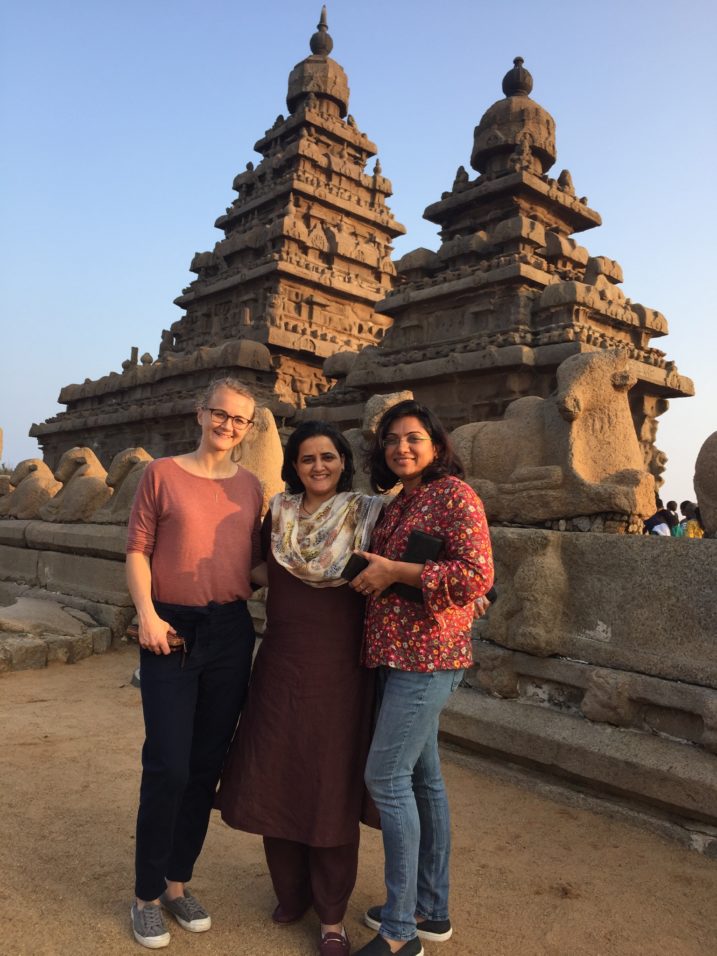India (Vellore): Assessment – Lead Poisoning in Tamil Nadu

Derma, inhalation
Tamil Nadu Pollution Control, Vellore Institute of Technology & University, local partners
A Preliminary Site Assessment (PSA) was completed in September 2018 to examine the site of a formal smelting facility. The highest lead levels were found in the yard of the school/day care center, which is attended by approximately 50 children below the age of 5. The extremely high concentrations observed around the school were of particular concern given the vulnerability of young children to the physiological effects of lead. Furthermore, approximately 55 households are located within close proximity of the factory, indicating a risk of lead exposure for the more than 200 residents. A team revisited in November 2019 and February 2020 to conduct in-depth assessments of the site.
Based on these assessments, Pure Earth designed a series of risk reduction activities to address the legacy contamination left by this operation. These activities aim to reduce blood lead levels among community members, particularly children, who live and attend school in close proximity to the facility. Recommendations were also made to remediate the smelter site to reduce future lead exposure risks at and from the site, and to allow redevelopment of the site.
The main components of the risk reduction strategy include drainage to collect and divert runoff from the facility and slag storage area; paving and fencing of school play area, thorough cleaning of school; thorough house cleaning and some paving in residential colony; additional paving along roadside; education campaign; and blood-lead monitoring before and after the interventions.
The Trafigura Foundation is contributing to the proposed risk mitigation activities. Cleanup was set for March 2020 but has been delayed due to the COVID-19.
Background
With funding from USAID, the European Commission, ERM and philanthropists, Pure Earth launched its Lead-Safe India Initiative in 2016 in Bihar. The Initiative focuses on reducing childhood lead poisoning by improving battery recycling processes in both the formal and informal sector and helping communities clean-up existing contamination that would otherwise continue to poison kids for generations to come.
The activities of this project will build upon recent work in Bihar and expand into Tamil Nadu, including the following elements:
1) assist a “dirty” lead smelter to reduce ongoing pollution near a school and homes outside of Vellore, Tamil Nadu;
2) remediate lead contamination around the school and adjacent residential community near the smelter;
3) educate the community on the dangers of lead and how to prevent exposure.
Since 2008, Pure Earth has developed a close relationship with the Indian Lead-Zinc Development Association-an industry group for lead and zinc smelters and recyclers in India. The Executive Director of this group has said publicly that he believes fewer than 50% of lead-acid batteries in India are recycled in the formal sector. This means most batteries are recycled in residential communities, using no pollution controls, where as much as 30% of the recycled lead can be lost into the air as fumes and dust. Local children then play in those communities and inhale or swallow lead dust as they breathe, put fingers in their mouths, or eat food covered in dust.
The specific need for this work in Tamil Nadu has been established through prior work in this state. In 2012, Pure Earth completed an assessment of the area surrounding a ULAB smelter in the community of Rangapuram, near Vellore, where schoolchildren are exposed to high levels of lead contamination. The need for the Lead-Safe India Initiative is supported firmly by data showing that lead pollution is poisoning the workers, their families and communities. And despite the enormous toll lead takes on the health and intellectual development of Indian children and being as big of a risk factor as tobacco for cardiovascular disease, this issue is not well understood among the public, the civil society sector, or the government.
The good news is that solutions exist and we have already demonstrated that they can be successful in India. Now we need to spread this information and replicate these solutions so that communities across India can begin taking concrete steps to address this public health and sustainable livelihood issue.
The project aims to reduce lead poisoning across India by demonstrating a solution in Tamil Nadu near Vellore. The project will build on a track record of successful work in India and will help upgrade sub-standard operations that contribute to this problem to safer practices.
